A: 176 Huỳnh Văn Bánh, Phường 12, Quận Phú Nhuận, Hồ Chí Minh
A: 176 Huỳnh Văn Bánh, Phường 12, Quận Phú Nhuận, Hồ Chí Minh
Phone: 090 747 07 79
Email: recycle.tattoo@gmail.com
For each country, the origin and meaning of tattoos vary! Join Recycle Tattoo to uncover the stories of Asian tattoos.
The stories of Asian tattoos are a rich and diverse part of the history, culture, and art of this region. For thousands of years, tattoos have been used as symbols with various meanings and values in East Asian culture.
Distinctive flowers like cherry blossoms, lotus flowers, peonies, and chrysanthemums are often combined in Asian-themed tattoo designs, creating beautiful and meaningful works of art. Each flower carries its meaning and symbolism, reflecting the depth and diversity of the culture and philosophy in this region. Below, you’ll find popular Asian tattoo styles and their stories – let’s explore them with Recycle Tattoo!
1. Koi Fish Tattoos
Koi fish tattoos are among the most popular and deeply meaningful symbols in Asian tattoo art, especially in Japanese and Chinese cultures. Koi fish tattoos are often depicted in vibrant colors, intricate details, and carry profound meanings of patience, transformation, strength, and success in life.
Koi fish are known for their ability to swim upstream, overcoming challenging conditions in water environments. This trait makes them a symbol of patience, resilience, and strong determination to overcome obstacles. In the world of tattoo art, images of Koi fish are often portrayed swimming against the current, symbolizing the act of rising above and the determination to achieve one’s goals.
There’s a legend that goes: “Every year, during the third week of the lunar month, thousands of Koi fish leave their habitats to swim towards the Yellow River. With great courage, they swim against the current and meet at the Dragon Gate waterfall. This waterfall is believed to have more power than the arrows of hundreds of warriors.
To succeed in their journey, Koi fish must confront numerous obstacles, predators, the force of the current, fishermen, and many other dangers. Among them, only the most daring can reach the top of this fierce waterfall. When they get there, they transform into magnificent dragons with gleaming golden scales. Those who fail will repeat the journey year after year.
Furthermore, the colors of Koi fish tattoos also carry their meanings:
Koi Kohaku – White body with red spots: Success in one’s career.
Koi Kumonryu – White body with black spots or entirely black: Life is always changing and evolving.
Koi Ogon – Silver body: Success in business and a symbol of wealth.
Koi Kuchibeni – White with red spots around the mouth: Love and long-lasting relationships.
Koi Yamabuki – Yellow color: Represents wealth and prosperity.
Koi fish tattoos often incorporate various symbols, such as yin and yang, water and fire, dragons, or lotus flowers. Each combination carries a different meaning.
Koi fish tattoos are commonly done in some “prime” body locations like the biceps, forearms, legs, back, hips, and chest.
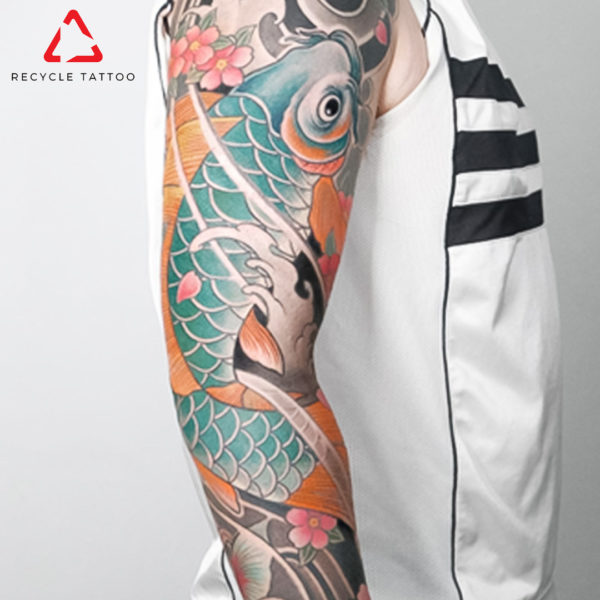 Image 1: A large Koi fish tattoo on the forearm will create a prominent focal point.
Image 1: A large Koi fish tattoo on the forearm will create a prominent focal point.
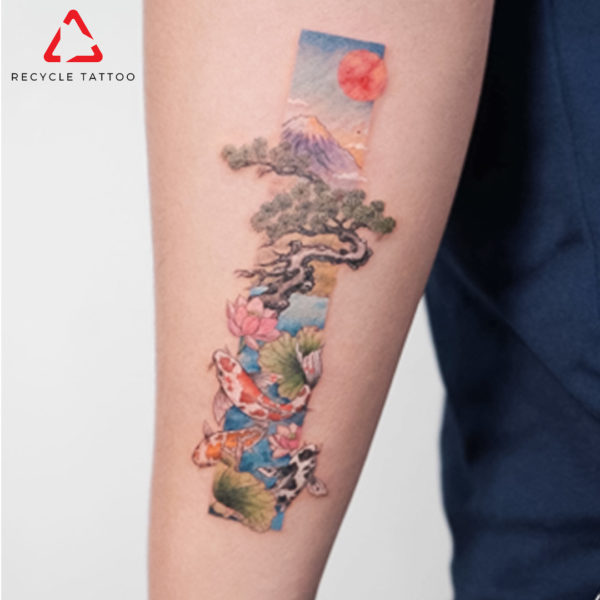 Image 2: A colorful school of Koi fish tattoo swimming in water is suitable for color enthusiasts.
Image 2: A colorful school of Koi fish tattoo swimming in water is suitable for color enthusiasts.
2. Foo Dog Tattoos
Foo Dogs, also known as Fu Lions, Shi Shi, or Stone Lions, are mythical creatures with profound symbolism. In Eastern culture, Foo Dogs are considered one of the Four Divine Beasts (Dragon – Lion – Tortoise – Phoenix) that guard the heavens.
Foo Dogs, also referred to as “Ly,” have the appearance of a creature that is part lion and part dog, sometimes featuring a single horn. This horn is said to never be used for aggression, symbolizing benevolence and inner kindness. Additionally, Foo Dogs are associated with warding off unexpected misfortune, increasing blessings, and bringing luck into one’s life.
The meaning of a Foo Dog tattoo is to portray strength, power, and the spirit of masculinity. It represents individuals who are like heavenly guardians, always caring for others, compassionate, virtuous, and willing to lend a helping hand.
Furthermore, Foo Dogs have been historically used to ward off evil and bring good fortune in Feng Shui practices.
When it comes to Foo Dog tattoos, the designs are typically bold and prominent. Therefore, these tattoos are often placed on larger areas of the body, such as the back, hips, chest, arms, and legs.
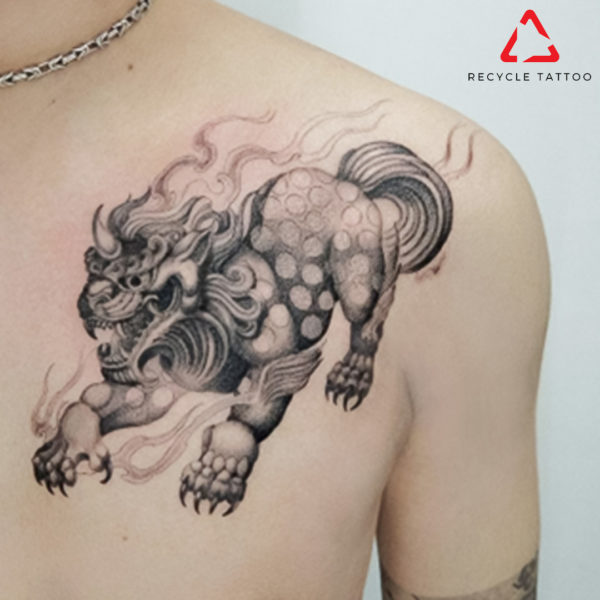 Image 3: A Foo Dog tattoo is believed to protect its owner and bring good fortune in life
Image 3: A Foo Dog tattoo is believed to protect its owner and bring good fortune in life
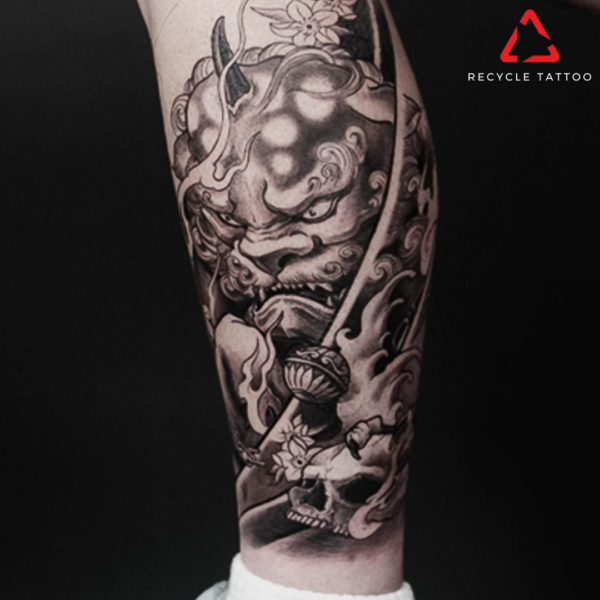 Image 4: A large Foo Dog tattoo on the calf is suitable for those with a bold and edgy personality
Image 4: A large Foo Dog tattoo on the calf is suitable for those with a bold and edgy personality
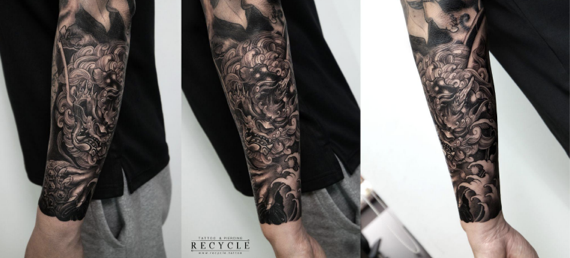 Image 5: You can also choose the forearm as a suitable location for a large Foo Dog tattoo
Image 5: You can also choose the forearm as a suitable location for a large Foo Dog tattoo
3. Fudo Myoo Tattoos
Fudo Myoo, also known as Acala, holds profound and sacred meaning in Buddhist philosophy. As you may know, Fudo Myoo is a deity in Buddhism, revered as a symbol of wisdom and enlightenment.
Every detail of the Fudo Myoo deity carries its own unique symbolic meaning. Fudo Myoo is often depicted with a blazing lasso, a sword of wisdom piercing through delusions, and severing the bonds of those ruled by violent passions.
Depending on the representation, Fudo Myoo may have 2, 4, or 6 arms, but at its core, the imagery portrays a fierce, wrathful demeanor, symbolizing anger, the incineration of hindrances (self-attachment), and the suppression of malevolent thoughts and emotions (obsession, grudge, etc.).
Those who choose to tattoo Fudo Myoo often seek protection from harm, courage, and freedom from demonic disturbances.
Furthermore, to capture the essence of the tattoo, Fudo Myoo designs are typically large in scale. Therefore, the preferred locations for these tattoos are often the back, torso, or the entire arm
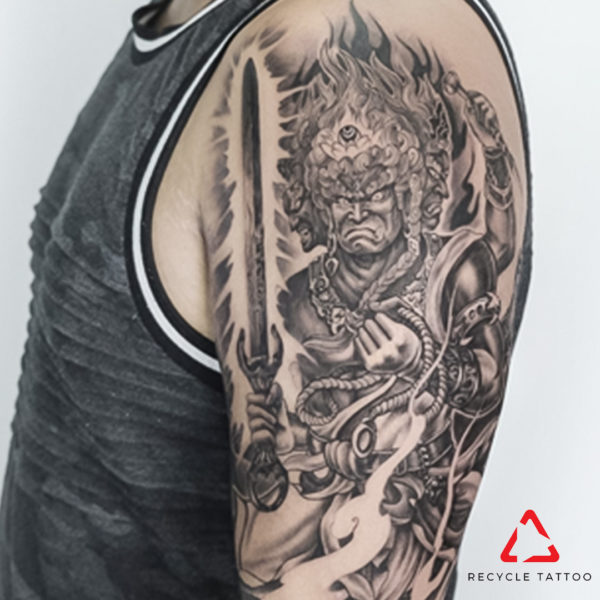 Image 6: A large Fudo Myoo tattoo on the forearm
Image 6: A large Fudo Myoo tattoo on the forearm
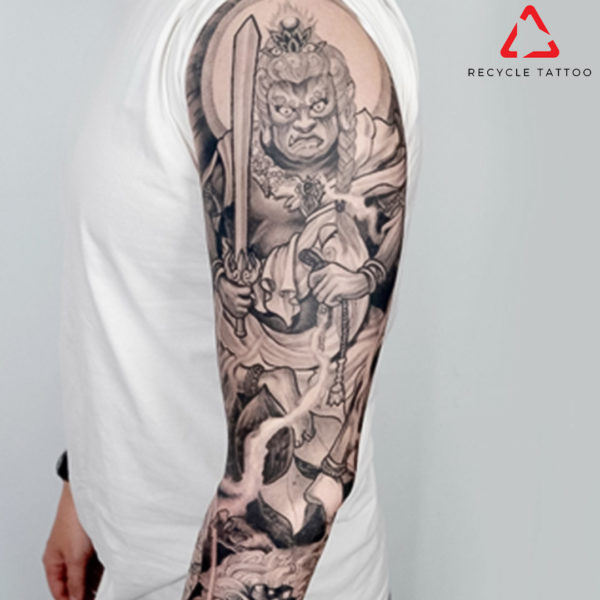 Image 7: Those who get a Fudo Myoo tattoo often desire protection from evil spirits
Image 7: Those who get a Fudo Myoo tattoo often desire protection from evil spirits
4. Buddha Tattoos
Buddhism guides individuals toward goodness, peace, and happiness. Those who follow Buddhism also wish to be illuminated, protected, and enveloped by the Buddha’s teachings.
Buddha tattoos hold profound meaning in the Buddhist religion, symbolizing reverence and devotion to the Buddha or the principles of Buddhism. Buddha tattoos represent enlightenment and convey the message of seeking inner peace and tranquility. As such, some people choose to tattoo the image of Buddha on their bodies as a means to bring luck, hope, and serenity into their lives.
Buddha tattoos are often detailed and come in various styles. However, all of them clearly depict the grandeur, solemnity, and benevolence of the supreme deity in the Buddhist realm.
Additionally, many people opt for tattoos of Quan The Am Bodhisattva – a highly compassionate deity who aids those in need and poverty. Tattooing the image of Quan The Am Bodhisattva instills faith in the spiritual realm and serves as a reminder for us to live with tolerance, generosity, and to help those less fortunate in life.
A few things to note when getting a Buddha tattoo: It is essential not to tattoo below the waistline, as it may violate taboos and some religious beliefs.
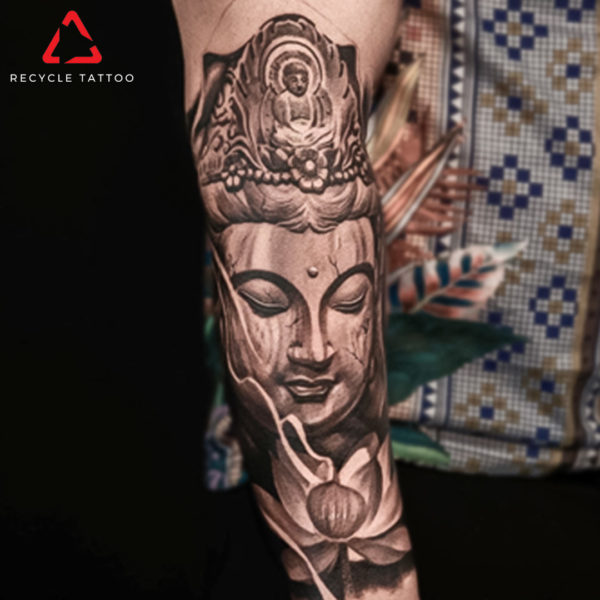 Image 8: A Quan The Am Bodhisattva tattoo serves as a reminder for us to live with tolerance, generosity, and to share with others
Image 8: A Quan The Am Bodhisattva tattoo serves as a reminder for us to live with tolerance, generosity, and to share with others
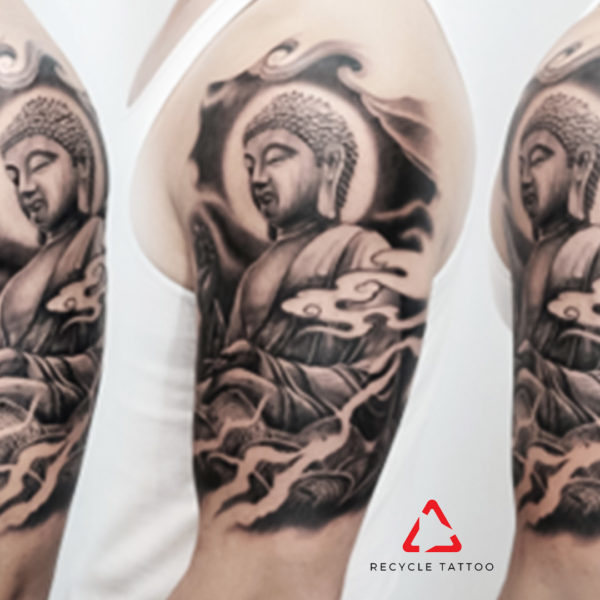 Image 9: A Buddha Shakyamuni tattoo represents enlightenment
Image 9: A Buddha Shakyamuni tattoo represents enlightenment
5. Oni Hannya Tattoos
Oni (鬼) are mythical creatures in Japanese folklore, often depicted as gigantic demons with one or more horns. They have red, blue, or green skin, wear tiger-skin loincloths, and carry iron clubs known as “kanabou.”
Hannya masks (般若) are used in Noh theater and represent a jealous female demon. They feature two sharp bull-like horns, metallic eyes, and a leering mouth.
The combination of these two images creates a tattoo known as Oni Hannya.
The meaning of an Oni Hannya tattoo serves as a reminder to restrain negative impulses within oneself. It reminds us to be mindful of our actions and decisions. It also symbolizes a transformation from past wrongdoing, aspiring to become better in the present. It encourages self-awareness of right and wrong to lead a happier and more virtuous life.
With an Oni Hannya tattoo, you have the flexibility to choose its placement based on your preference, whether it’s on the back, shoulder, or arm. The choice of location depends on the size of the tattoo and what suits you best
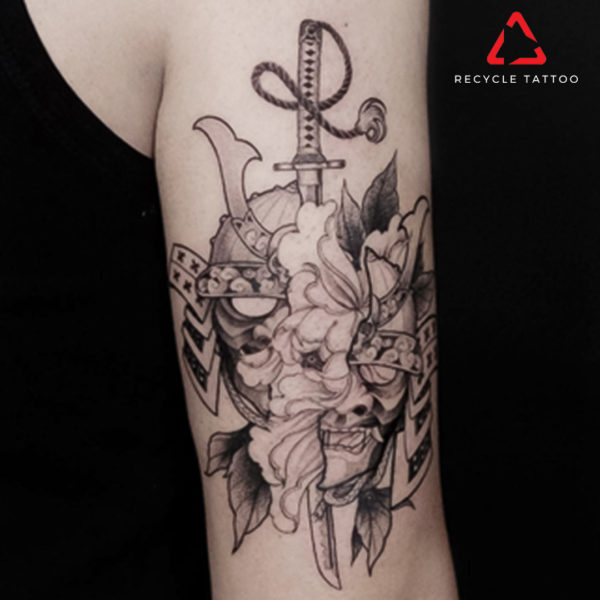 Image10: An Oni Hannya tattoo serves as a reminder to control and temper the negative tendencies within each person
Image10: An Oni Hannya tattoo serves as a reminder to control and temper the negative tendencies within each person
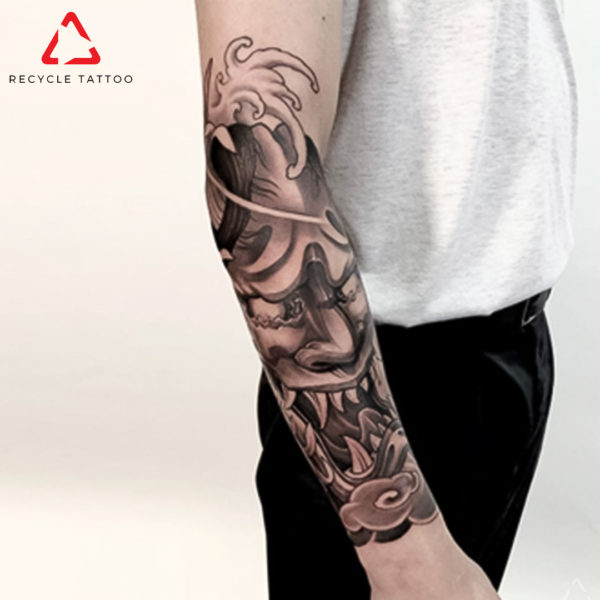 Image 11: An Oni Hannya tattoo can be inked in any location according to personal preference
Image 11: An Oni Hannya tattoo can be inked in any location according to personal preference
If you’ve found the perfect embroidery tattoo idea, don’t hesitate to visit Recycle Tattoo. Our tattooists are always ready to assist you in bringing your recycling journey to life!